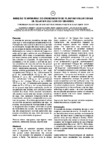Use este identificador para citar ou linkar para este item:
http://www.alice.cnptia.embrapa.br/alice/handle/doc/1028003Registro completo de metadados
| Campo DC | Valor | Idioma |
|---|---|---|
| dc.contributor.author | BRIGHENTI, A. M. | pt_BR |
| dc.contributor.author | OLIVEIRA JUNIOR, A. de | pt_BR |
| dc.contributor.author | CASTRO, C. de | pt_BR |
| dc.contributor.author | ALVES JÚNIOR, L. C. | pt_BR |
| dc.date.accessioned | 2015-11-05T11:11:11Z | pt_BR |
| dc.date.available | 2015-11-05T11:11:11Z | pt_BR |
| dc.date.created | 2015-11-05 | pt_BR |
| dc.date.issued | 2015 | pt_BR |
| dc.identifier.citation | In: REUNIÃO NACIONAL DE PESQUISA DE GIRASSOL, 21. | pt_BR |
| dc.identifier.citation | SIMPÓSIO NACIONAL SOBRE A CULTURA DO GIRASSOL, 9., 2015, Londrina. Anais... Londrina: Embrapa Soja, 2015. | pt_BR |
| dc.identifier.uri | http://www.alice.cnptia.embrapa.br/alice/handle/doc/1028003 | pt_BR |
| dc.description | RESUMO: O controle de plantas voluntárias de soja (Glycine max ) é uma exigência estabelecida em lei. A criação do vazio sanitário determina o período na entressafra no qual não deve haver a presença no campo de plantas emergidas de soja. Essa deliberação visa reduzir o inóculo do fungo causador da ferrugem asiática da soja (Phakopsora pachyrhizi). Além disso, a competição imposta por essas plantas pode reduzir a produtividade das culturas em sucessão. O experimento foi conduzido a fim de avaliar o controle de plantas voluntárias de soja em cultivos de girassol (Helianthus annuus). Os tratamentos aplicados foram: testemunha capinada, testemunha sem capina, amônio glufosinato 40 g i.a. ha-1, amônio glufosinato 100 g i.a. ha-1, sulfentrazone 75 g i.a. ha-1, sulfentrazone 100 g i.a. ha-1, tembotrione 21 g i.a. ha-1, carfentrazone 4 g i.a. ha-1, saflufenacil 1,75 g i.a. ha-1, saflufenacil 3,5 g i.a. ha-1, triclopyr 120 g i.a. ha-1 e MSMA 197,5 g i.a. ha-1. O herbicida sulfentrazone nas doses de 75 e 100 g i.a. ha -1 causa fitotoxicidade ao girassol logo após a aplicação, porém há recuperação das plantas, sem prejuízo a produtividade da cultura. Esses mesmos tratamentos não causam morte total das plantas voluntárias de soja, mas paralisam temporariamente seu crescimento, evitando a competição com a cultura do girassol. O amônio glufosinato é eficaz no controle de plantas voluntárias de soja. No entanto, os sintomas de fitotoxicidade na cultura do girassol são elevados, refletindo em perda de rendimento da cultura. Os outros tratamentos não proporcionam controle satisfatório das plantas voluntárias de soja, além de causar redução na produtividade do girassol. ABSTRACT: The control of volunteer soybean (Glycine max) is regulated by law due to the host-free period which determines the interval that is not allowed the presence of soybean plants in fields. The decision aims to reduce the inoculum of the fungus that causes the Asian soybean rust (Phakopsora pachyrhizi). Furthermore, the competition imposed by volunteer soybean plants can reduce crop yields. The experiment was conducted to evaluate the control of volunteer soybean plants in sunflower (Helianthus annuus). The treatments were as follows: hoed check, check without hoeing, glufosinate ammonium 40 g ai ha-1, glufosinate ammonium 100 g ai ha-1, sulfentrazone 75 g ai ha-1, sulfentrazone 100 g ai ha-1, tembotrione 21 g ai ha-1, carfentrazone 4g ai ha-1, saflufenacil 1.75 g ai ha-1, saflufenacil 3.5 g ai ha -1, triclopyr 120 g ai ha-1 and MSMA 197.5 g ai ha-1. Sulfentrazone (75 and 100 g ai ha-1) caused phytotoxicity on sunflower plants, however there is recovery of plants and no yield losses. The same treatments do not cause the total death of volunteer soybean plants, however temporarily paralyze its growth and avoid competition with the sunflower crop. The glufosinate ammonium is effective in controlling volunteer soybean plants. However, symptoms of phytotoxicity in the sunflower crop are high, reflecting in yield losses. The other treatments do not provide satisfactory control of volunteer soybean plants and even cause reduction in sunflower productivity. | pt_BR |
| dc.language.iso | por | pt_BR |
| dc.rights | openAccess | pt_BR |
| dc.subject | Planta voluntária | pt_BR |
| dc.title | Inibição temporária do crescimento de plantas voluntárias de soja na cultura do girassol. | pt_BR |
| dc.type | Artigo em anais e proceedings | pt_BR |
| dc.date.updated | 2017-02-02T11:11:11Z | pt_BR |
| dc.subject.thesagro | Erva daninha | pt_BR |
| dc.subject.thesagro | Soja | pt_BR |
| dc.subject.thesagro | Girassol | pt_BR |
| dc.subject.thesagro | Helianthus Annuus | pt_BR |
| dc.subject.nalthesaurus | Weeds | pt_BR |
| dc.subject.nalthesaurus | Soybeans | pt_BR |
| dc.format.extent2 | p. 71-74. | pt_BR |
| riaa.ainfo.id | 1028003 | pt_BR |
| riaa.ainfo.lastupdate | 2017-02-02 | pt_BR |
| dc.contributor.institution | ALEXANDRE MAGNO B DOS SANTOS, CNPGL; ADILSON DE OLIVEIRA JUNIOR, CNPSO; CESAR DE CASTRO, CNPSO; LUIZ CARLOS ALVES JÚNIOR, Caramuru Alimentos S/A, Itumbiara, GO. | pt_BR |
| Aparece nas coleções: | Artigo em anais de congresso (CNPSO)  | |
Arquivos associados a este item:
| Arquivo | Descrição | Tamanho | Formato | |
|---|---|---|---|---|
| RNPG.p7174.pdf | 168.36 kB | Adobe PDF |  Visualizar/Abrir |









